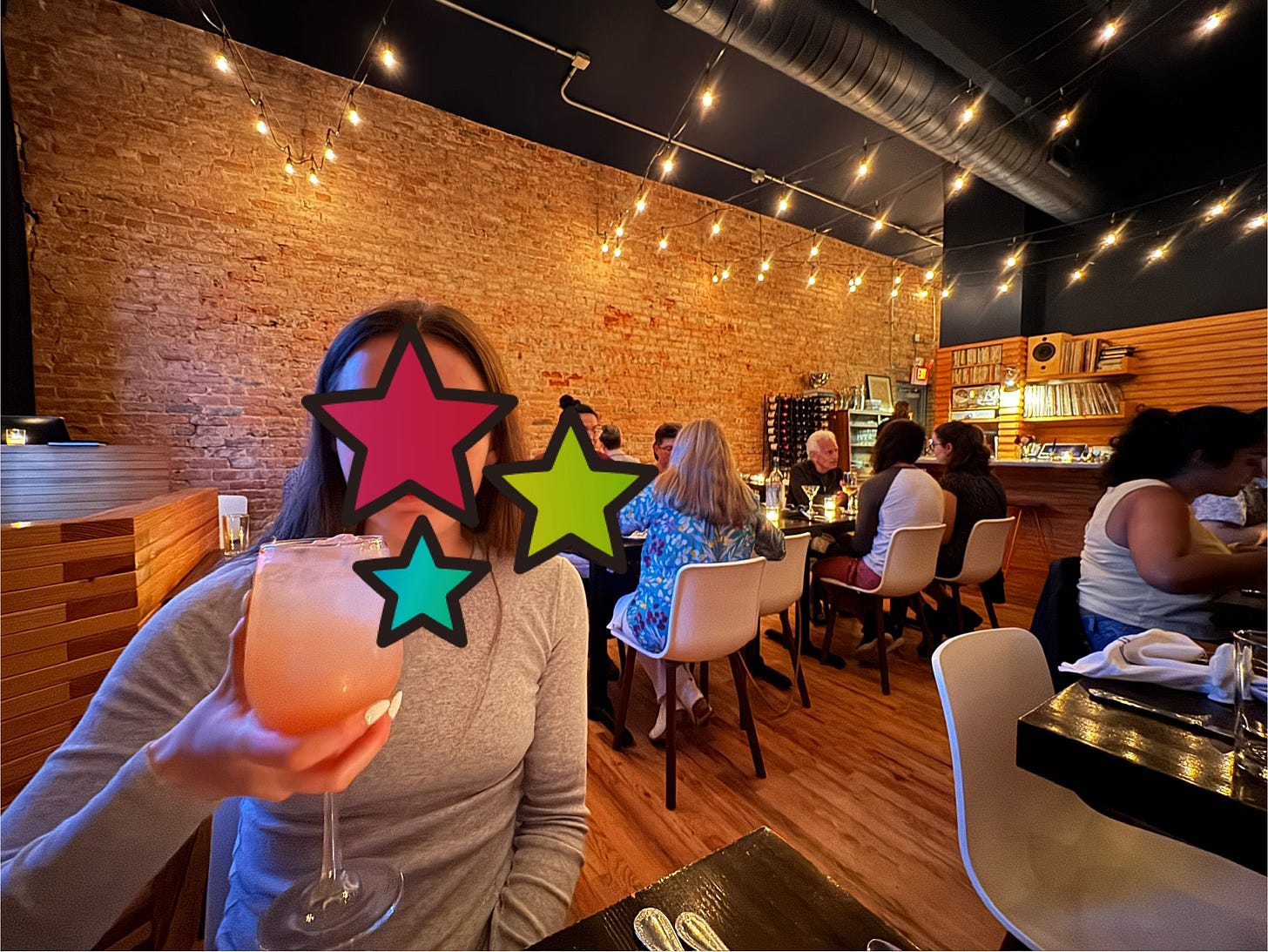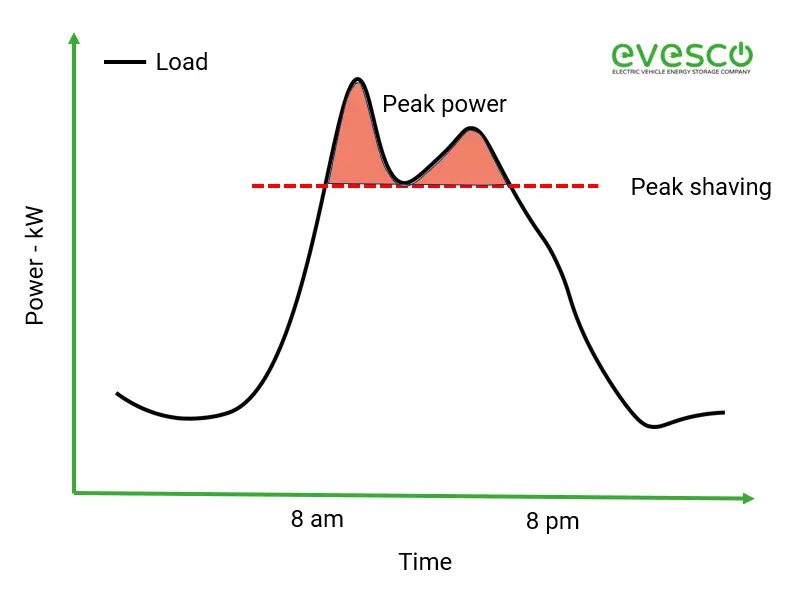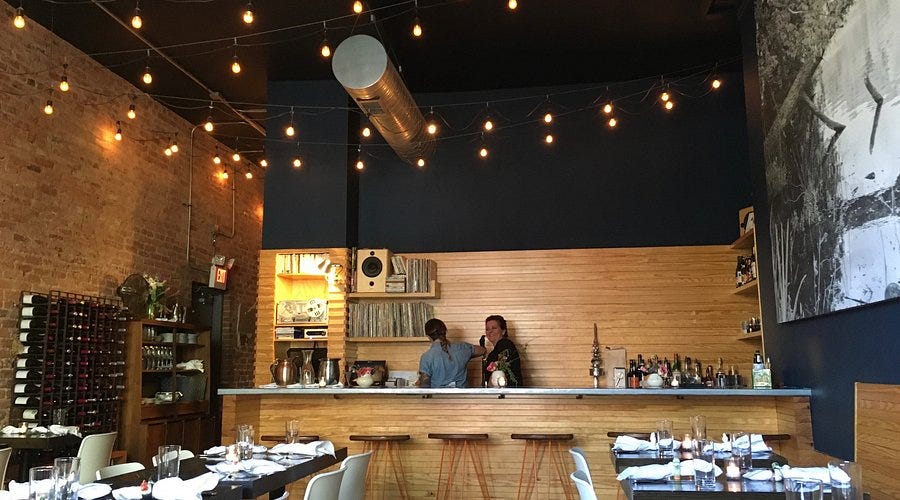Littler, Part 1
What the final days of a beloved restaurant say about ownership and placemaking
Last Friday, I took a loved one to Littler in Durham. It is a thoughtful restaurant on a tiny footprint a bit off the beaten path in Downtown Durham. Littler recently announced they will close permanently on June 21. This lovely dinner gave me a chance to think about why places like these matter, what we need to do to get more of them, and how to ensure that they thrive.
Littler is extremely well-curated. The local chef/owner, Gray Brooks, is well-known (He also owns Pizzeria Toro). He creates short and simple menus; everything is good, and nothing isn’t. The interior ambiance is composed of rich wood, brick walls, and string lights. There is no design noise here, but there is analog sound: a record player flanks the bar. You can bring your own vinyl, which they will play while you dine.
In this setting, with this backdrop, many a memorable night has been had. Everything about Littler is emphatically local. Unlike a Chipotle, it’s sad when a place like this closes. It feels like a funeral. It’s depressing to see something inspiring come to an end.
The Inspiration Test
Whenever I give a talk in the Triangle now, I give my audience The Inspiration Test. It’s a simple question, which I put openly to the crowd:
“Name a new local development, built this century, that inspires you.”
I add: Not a development that you think is OK or you sort of like, but one that inspires you. The kind of place that makes you feel amazing and makes you want to take people there. Any size development is valid: it can be a food stall, for all I care.
Invariably, someone shouts out, “American Tobacco Campus!” Yes, that’s an amazing project—and it is certainly inspiring—but not new. Others shout out things that are pretty good but not necessarily inspiring, such as Fenton or One City Center.
Sadly, not much built today passes The Inspiration Test.
What does pass the test is not “development”, as we traditionally think of it as large and exterior driven, but interior designs and upfits, such as restaurants.
Some of my favorites are Press Coffee and Crepes, a modern Parisian-style cafe designed by Julie Cahoon of Mint Architecture, and Aaktun (video below), a Tulum and Tiki-inspired cafe by James Beard nominee Oscar Diaz. At Aaktun, the developer (CityPlat) worked with multiple restauranteurs to turn a light industrial park into Durham’s next great “place.” On the interior, the creative finishing and lighting blow guests away.
Small storefront businesses like these are worthy of study because they foster diversity across all neighborhoods and price points. Taken collectively, they are precisely what makes a city, a people, and a culture.
Why Restaurateurs Are Today’s Best Developers
Why is it that restaurants are consistently delivering excellence while our buildings are not? It’s pretty simple, actually. Restauranteurs are tasked with curating incredible experiences and are largely exempt from the oppressive design rules and processes that encumber building and site development.
That’s a dual benefit relative to housing because, unlike housing developers, restaurateurs are free to deliver their creative vision—which allows them to focus on putting on a show for their patrons.
As retail consultant Kathleen Norris points out, restaurateuring is essentially theater. Every night you have a fixed number of seats available, and you have to put butts in those seats. Irrespective of a thousand variables—the economy, labor markets, weather—the show must go on. Every night is an effort of Herculean proportions. And when it’s over, the clock turns to a new day, you start at 100 empty seats, and it begins again. It takes a special team to do this work.
This pressure cooker, when combined with talent and freedom, produces abundance, diversity, and quality. Durham’s restaurant scene is the result.
This begs the question: what would happen if housing were similarly freed?
Freedom of Design is a Prerequisite of Great Design
Lightly regulated markets foster creativity. And that's where inspiring stuff grows.
Current zoning codes, which heavily regulate design, encourage housing to be uniform and monotonous. Regulation flattens innovation. They mandate (often purposeless) front and rear yards, private car storage, and car-dependent densities.
As the rulebook grows, localism is squashed, and the diversity of products disappears. Local housing in the Triangle now echoes David Sedaris’ description of his hometown: “There’s a place exactly halfway between heaven and hell, where nothing is terrible but nothing is great, and that’s Raleigh.”*
Or Durham.
A financial, political, and regulatory machine prospers off of facilitating the monotony. And that uniformity is what sucks all the life out of the built environment.
Current zoning regulations do what is called peak shaving in energy management; it removes the highs and lows and makes everything more predictable, i.e., the same.
While the benefit of energy management peak shaving is efficiency, the concept has clear costs in development. Peak shaving suburbanizes housing.
Fighting for the alternative to monotonous sprawl requires supporting things outside this machine environment. Which is, things inside the city. Today that is done chiefly by supporting small local storefront businesses, which are disproportionately restaurants.
Durham is Good at Restaurants
It’s always important for a city to recognize what it is good at. In Durham, we are good at restaurants and, thus, should be making it easier for restaurants to open, grow, and thrive.
That will require a combination of:
Better training and apprenticeship opportunities.
Support for start-up incubator spaces, like food halls and farmers’ markets.
Oversight of regulatory bodies that discourage small business activity
An enhanced journalistic culture that celebrates leaders in food. Awards always help, and praise is generally free to give.
A Restaurant Guild for professionals to support each other.
Ownership Matters, too.
Continuing that list, owning the building is critical to risk mitigation and the long-term survivability of restaurants through crises like Covid or a recession. Restaurants are extremely expensive to build —a kitchen alone can exceed $500,000, and the nicer restaurants frequently cost more than $1,000,000. If a restaurateur’s restaurant goes belly up, as many do, those loans can be a traumatic loss. If they own the building, however, the enterprise might be salvageable, and their personal finances might not be ruined either.
That’s why retail ownership of buildings is so important.
How To Create Building Ownership Opportunities, next week, in part 2…
*paraphrasing, I could not re-locate Sedaris’ exact quote










This was a fun evening and a sad post to write. Hope you enjoy.